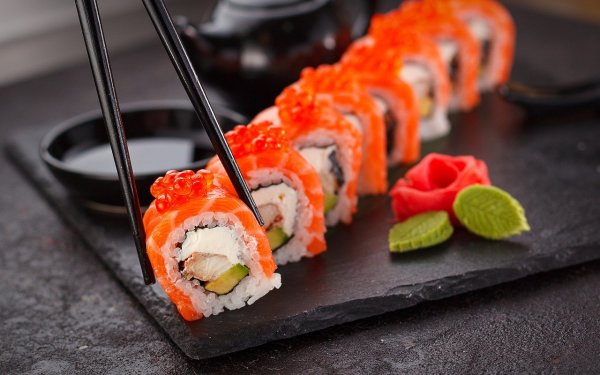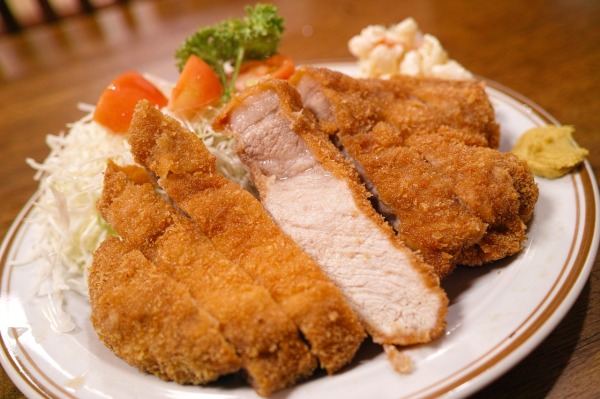[Look at China September 8, 2021 News]Speaking ofJapanese foodIs it true that what comes to mind in many people’s minds is traditional”Japanese meal“, a small dish, a small portion, the kind that can’t get enough to eat?
Kaiseki cuisine is indeed the quintessence of Japanese traditional cuisine. It embodies more connotation, and it is the epitome of Japanese food culture. However, the people who live in the streets and alleys of Japan do not eat kaiseki all at once! Are there any Japanese dishes that are close to life and have Japanese characteristics that must be tried? simple! A trip to Japan, you can eat all of the following 10, even if you haven’t come in vain!
1. Ramen
Ramen is the most national delicacy in Japan! Ramen, which originated in China, was thoroughly localized in Japan, and no trace of domestic ramen can be found anymore, and it has become completely Japanese.
Ramen (Image source: Pixabay)
There are four main types of ramen in Japan-soy sauce flavor is the most mainstream flavor in Honshu, and salt ramen soup is clear and can highlight the flavor of the soup base. These two are the most common types of ramen. There is also the southern tonkotsu ramen, which originated in Kyushu. It uses pork bones to simmer for a long time in a white soup with a rich taste. It is most famous in Fukuoka and Hakata. The miso ramen is usually mixed with miso and vegetables first, and then mixed with chicken bone broth. The flavor is heavy and rich in layers. The most famous miso ramen comes from Sapporo, Hokkaido.
The base seasoning of each ramen noodles has different characteristics, resulting in different flavor extensions. With the addition of barbecued pork, seaweed, bamboo shoots, bean sprouts, fish slabs or corn kernels, it has become a traditional but personal dish. .
2, sushi
There are actually many types of sushi in Japan, from the most common nigiri sushi and rolled sushi, to hand-rolled seaweed sushi, warship seaweed sushi, chiraki sushi rice and so on. But the best thing to test the craftsmanship and the freshness of the ingredients is to eat nigiri sushi.

sushi
If you have a good sushi meal in Japan, don’t go to the conveyor belt sushi restaurant. Sitting at the bar in a circle, watching the chef take the ingredients directly on the spot, squeeze them and deliver them to your hand, is to feel the true meaning of sushi.
3. Shabu-shabu
The domestic “Xiabu Xiabu” is a transliteration of the Japanese word for shabu-shabu. Japanese-style shabu-shabu generally uses kelp broth as a base. The meat is very thin and delicate, and it melts in the mouth, so you can eat it when you blanch it. Because of its light taste, it is usually supplemented with Japanese-style sesame dressing or grapefruit vinegar as a dipping material.
There is also a dish called sukiyaki which is similar to shabu-shabu. The difference is that the soup base is delicious and sweet, and the popularity of sukiyaki is also extremely high.
At the end of the shabu-shabu, you can choose to pour rice in the leftover soup base to make a miso, or add udon noodles. In Japan, there are many affordable shabu-shabu restaurants, and the price is around 3,000 yen per person, with unlimited self-service; while for high-end shabu-shabu, the famous Kuroge Wagyu beef and Kagoshima black pork and other high-end ingredients are provided. It can be said to be an affordable and top-notch national cuisine.
4. Tempura
The Japanese are also well-known for their love of tempura. The so-called tempura can be used for everything. No matter what, just wrap it in a layer of batter and walk it in 180 degree hot oil, and the taste will not be too bad.
It is said that tempura was originally an extension of the Portuguese diet, and the chanting method also directly took the transliteration of “Tempura”. But obviously now tempura has become a common dish in Japanese families, and it is not difficult to see it in various restaurants, and even tempura rice, tempura udon noodles, etc. are derived. The taste is also unique.
5. Okonomiyaki
There are many delicious foods in Osaka, and the three most famous ones are takoyaki, fried skewers and okonomiyaki. Strictly speaking, Okonomiyaki is a bit one-sided, because Hiroshima’s お好み焼き is also very famous, and the method is slightly different, so many places will directly translate it into “Japanese pancake”.
This method of using vegetables and topping to fry on an iron plate is a bit similar to the northern Chinese delicacy “pastazi”, but the combination of sauce, mayonnaise, seaweed powder and wooden fish flower must be authentic after it is baked. Japanese food too.
6. Japanese curry
If Japanese people choose their favorite home cooking, it is estimated that five out of ten people will choose curry. The Japanese love of curry is already well-known all over the world. They use curry, curry bread, curry buns, curry udon, curry pot… Japanese curry that is completely different from the birthplace of India, and there are many. A frequent visitor at the Chinese table.
Most of Kanto’s curry is pork curry, while Kansai is based on beef curry. The curry specialty shops in the market are also competing to develop a variety of special dishes with different flavors. When you come to Japan, a meal of curry is absolutely impossible to escape, maybe even. I want to buy a few boxes of curry cubes at the supermarket to take home!
7, rice bowl
The source of vitality for the Japanese is a bowl of beef rice! There are such “don shops” all over the streets and alleys of Japan. The so-called “don” is actually a bowl of rice. In addition to various beef rice, there are also teriyaki chicken rice, parent-child rice chicken + egg, pork chop rice, tempura rice bowl, etc. These simple and delicious Japanese fast food is a lunch break for Japanese salaried workers. The first choice for dining out.
8, cooking blowfish
Fugu dishes are also served in some places in China, but due to improper handling, food poisoning can easily occur. In Japan, all puffer fish restaurants must have a special business license, and the chefs who make puffer fish dishes must also obtain a special license to handle puffer fish. Therefore, you can eat fugu cuisine in Japan without worrying about food safety issues.
Even if it expands to the world, the best puffer fish dishes are undoubtedly Japan. Puffer fish is rich in nutrients, low in calories, and has a very special taste. It is considered a relatively high-end Japanese cuisine.
9. Tonkatsu
I would never have thought that tonkatsu would be on the list. That’s right, tonkatsu is one of the perfectly localized Japanese dishes. If you don’t eat Japanese-style pork cutlet rice once in Japan, you may never know why the pork cutlet rice in various anime Japanese dramas is so popular.

Use plum pork with the right thickness, wrap it in flour paste and breadcrumbs, and slowly fry it until golden brown in the proper oil temperature. A bite is crispy on the outside and tender on the inside. The gravy is overflowing. It is served with shredded cabbage. It is not only refreshing It’s also very good.
Generally, tonkatsu is a popular food and the price is affordable. Some tonkatsu specialty stores will use the famous brand of pig in Japan. There are even Michelin-starred shops that specialize in tonkatsu, which has a signature taste that has lasted for generations.
10. Wagashi
Daifuku, Taiyaki, Kinping Sugar, Mitarai Meatballs… These high-value snacks that are more visual than taste, are the favorite of foreigners to buy souvenirs in Japan. Because of special emphasis on handicrafts, wagashi is called “the flower in Japanese food culture”. These traditional craftsmanship may have a century-old history in old shops in the Kyoto area.
As the tea ceremony began to prevail among the nobles in ancient Japan, snacks were indispensable in the course of elegant and fulfilling tea drinking. This traditional way of eating has continued to the present. The slightly bitter and mellow matcha with sweet wagashi, this sweet but not greasy taste enjoyment makes many people fall into it.
Editor in charge: Feifei
Short URL of this article:
All rights reserved, any form of reprinting requires Chinese authorization. It is strictly forbidden to establish a mirror website.
[Honorary Member Wanted]Streams can merge into the sea, and small kindness can achieve great love. We sincerely recruit 10,000 honorary members from Chinese people around the world: each honorary member only needs to pay one subscription fee per year, and becoming an honorary member of the “Watch China” website can help us break through the censorship and blockade, and provide at least 10,000 mainland Chinese compatriots Provide independent and true key information to warn them in times of crisis and save them from the great plague and other social distress.

.